Dakota Hoska is a graduate student in the Master of Arts in Art History program. Dakota was awarded a Department of Art History Research Grant to support travel and research for her Qualifying Paper.
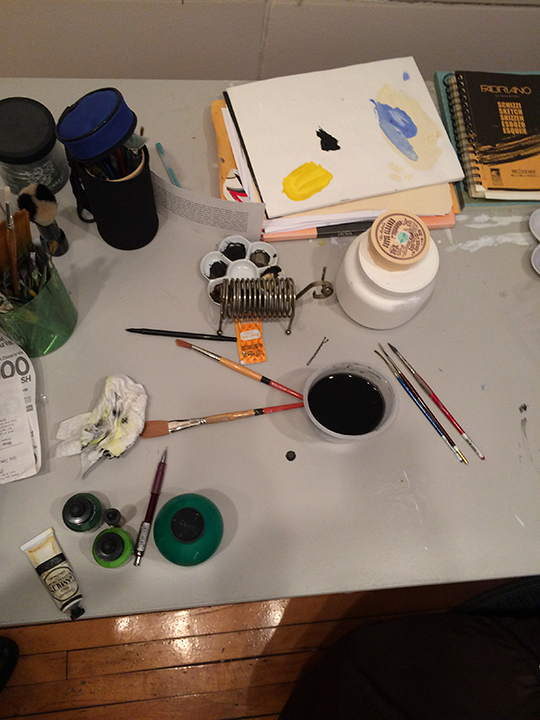
Carlson’s tools in her studio
There’s a lot I thought I knew. I had seen Andrea Carlson speak several times, and I had watched many of her interviews. We hold her piece Sunshine on a Cannibal at the Minneapolis Institute of Art where I work, and I have seen it installed on a few occasions. I thought I had good insights on this artist as a topic for my Qualifying Paper (QP), but, even so, many things changed after I was able to travel to Chicago and meet with Carlson in person. The opportunity to travel to Chicago was supported through a grant from the University of St. Thomas Department of Art History. I am very thankful that I was afforded that opportunity because it really influenced the direction of my final paper.
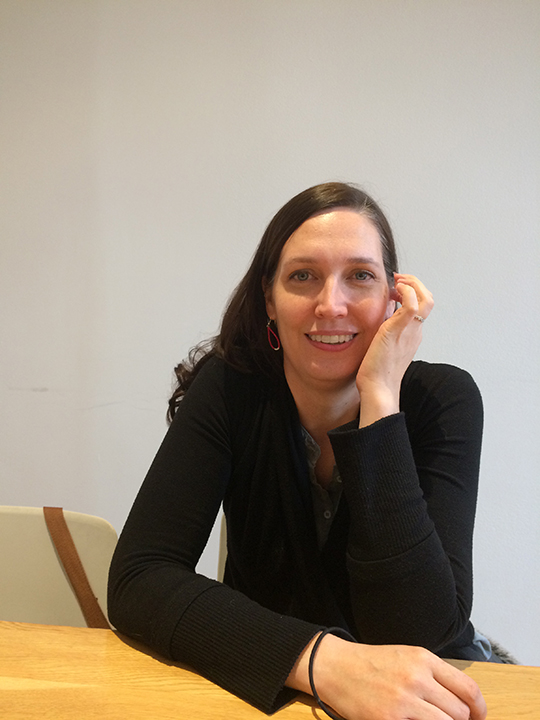
Andrea Carlson, taking a break for a recorded conversation after touring the Field Museum Collection
Andrea Carlson is a deeply thoughtful artist with a very complicated deliberation process as it relates to the visuals found in her work. It would have been very difficult for me to whittle down which direction to take in my analysis of her work without meeting with her in person. Before going to Chicago, I had a 3 ½ page outline of things that I believed were possible to address in my QP. After meeting with Carlson, I was able to carve 2 ½ pages off my outline. Not simply because the topics were no longer relevant, but because after speaking with Carlson I realized the subjects were either SO meaningful for the artist that I would need considerable more time to address them than the QP allowed, or because I discovered the issues didn’t relate to the artist in the way I had assumed.
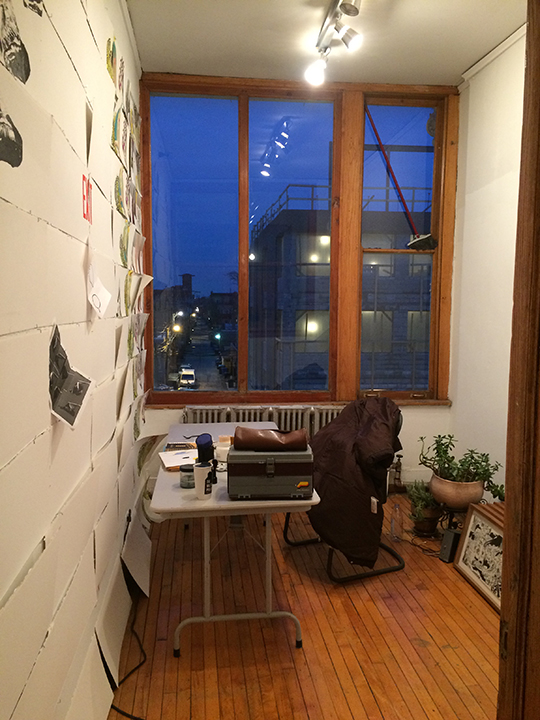
Andrea Carlson, studio visit. Carlson’s work is often so large, she can only see sections of it at a time because of her small space.
Traveling to the artist’s location allowed me to visit her museum, meet her friends, and tour institutions where she often serves as an advisor or where she simply goes for inspiration and learning opportunities. This helped me prioritize the subjects I wanted to address in my QP as well as develop a new and very important professional relationship.
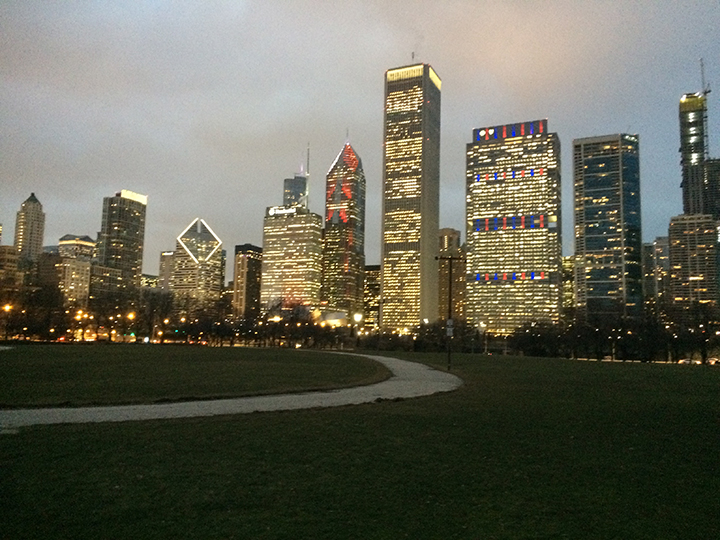
After leaving Andrea after a long day of touring the Chicago Art Institute, she directed me to cross through this park to return to my hotel where I had a lovely skyline view of the city of Chicago.
One day, I would like to do the first major exhibition of Carlson’s work, as well as produce her first monograph. I don’t know if I’ll get that opportunity, but if I do, it is this trip that began my journey towards that destination. I think non-academics may assume that we scholars are sitting home in front of our computers with stacks of books in front of us, seldom seeing the light of day. (OK, that is very true some of the time). But I think the best scholarship is closely tied to the personal experience, and travel grants like this one help to make those kinds of individual encounters possible.
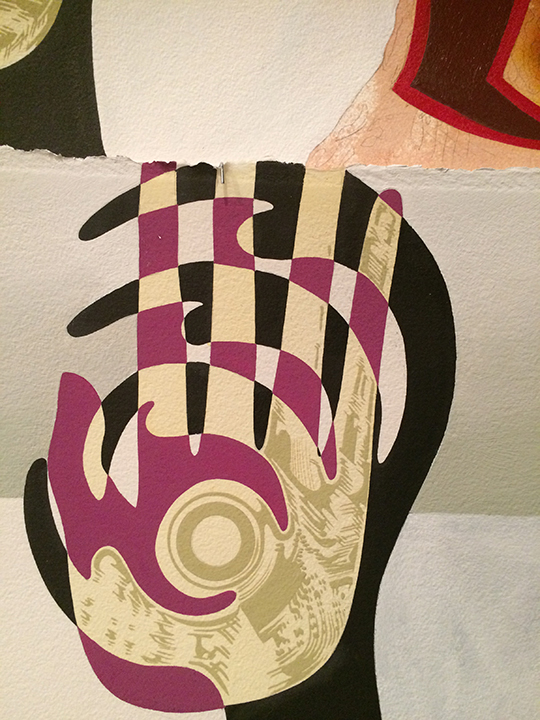
A sneak peek of some of the imagery Carlson is working on for her next big painting, Red Exit.
My deepest thanks go to the University of St. Thomas Department of Art History for my grant. It really changed the trajectory of my paper, helped me streamline my research, and allowed me create a strong and lasting relationship with this very important Native artist, who I’m sure will continue to be a focus for me throughout my career.